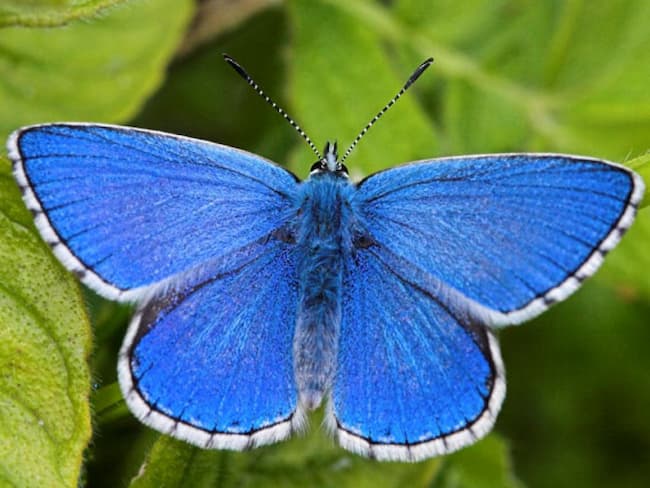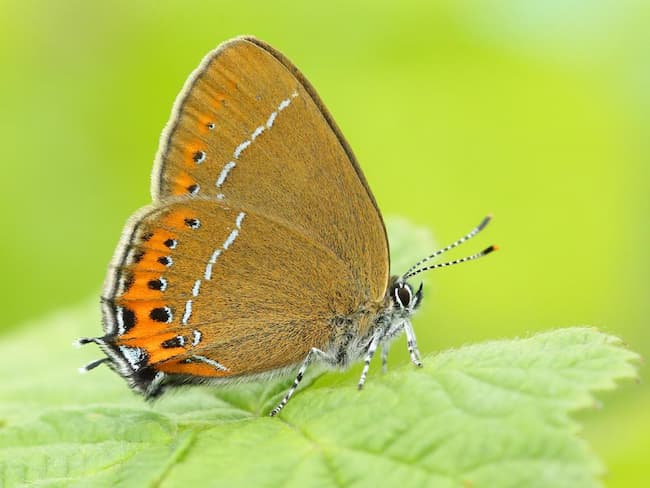The world of butterflies is filled with an array of enchanting species, and one that stands out for its beauty and elegance is the Chalk Hill Blue (Polyommatus coridon). In this article, we will explore the captivating characteristics of the Chalk Hill Blue butterfly, including its physical features, habitat, life cycle, ecological significance, and ways to contribute to its conservation. Let’s embark on a journey into the mesmerizing world of this delicate creature.
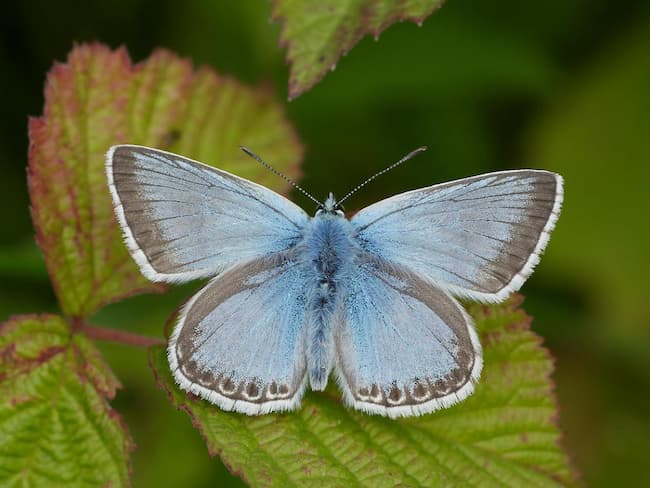
The Fascinating Chalk Hill Blue Butterfly
2.1 Physical Characteristics
The Chalk Hill Blue butterfly is a medium-sized species, with a wingspan ranging from 3.5 to 4.5 centimeters. The males display a vibrant blue color on the
2.2 Habitat and Distribution
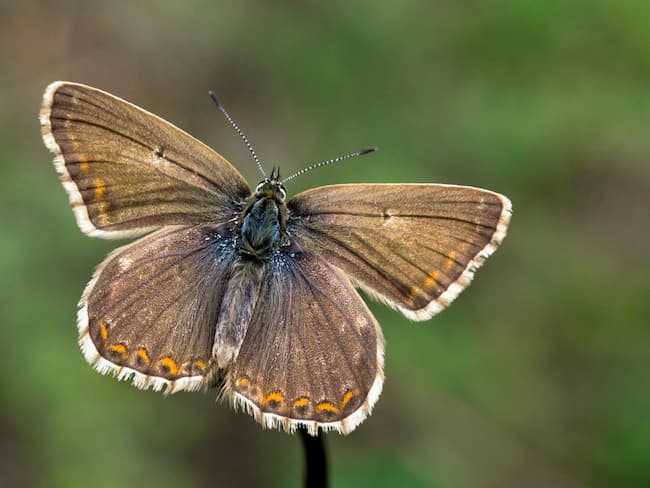
The Chalk Hill Blue is predominantly found in chalk grasslands and downs across Europe, including the United Kingdom. It thrives in open, sunny areas with sparse vegetation, such as hillsides and coastal cliffs. The availability of suitable host plants and nectar-rich flowers plays a vital role in determining their distribution.
Life Cycle of the Chalk Hill Blue
3.1 Egg Stage
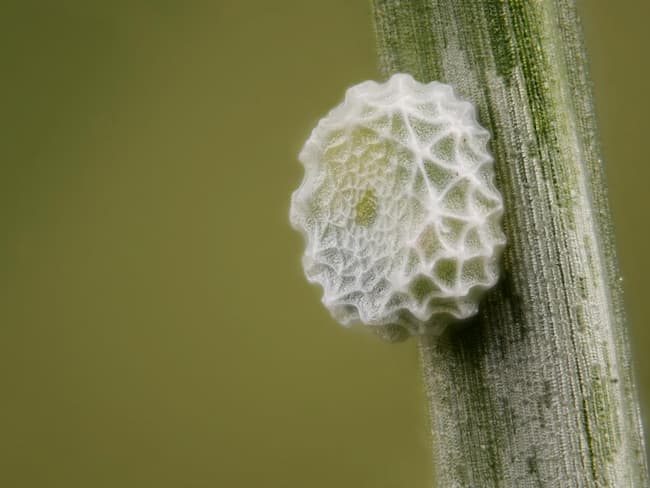
The life cycle of the Chalk Hill Blue begins with the female butterfly laying tiny pale-green eggs on the leaves and stems of specific host plants, such as horseshoe vetch (Hippocrepis comosa). These eggs are carefully placed in clusters and provide a protected environment for the developing larvae.
3.2 Larval Stage
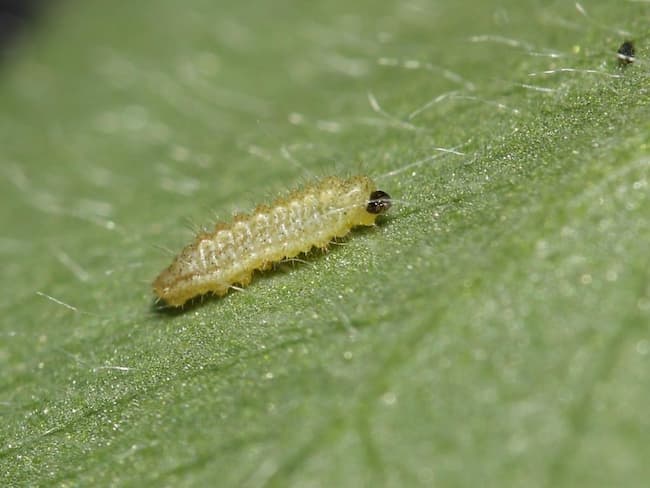
Once hatched, the Chalk Hill Blue larvae, known as caterpillars, feed on the leaves of the host plants. They go through several molting stages, shedding their old skin to accommodate their growing bodies. The caterpillars possess small spines and have a green or brown coloration, blending with their surroundings for camouflage.
3.3 Pupal Stage
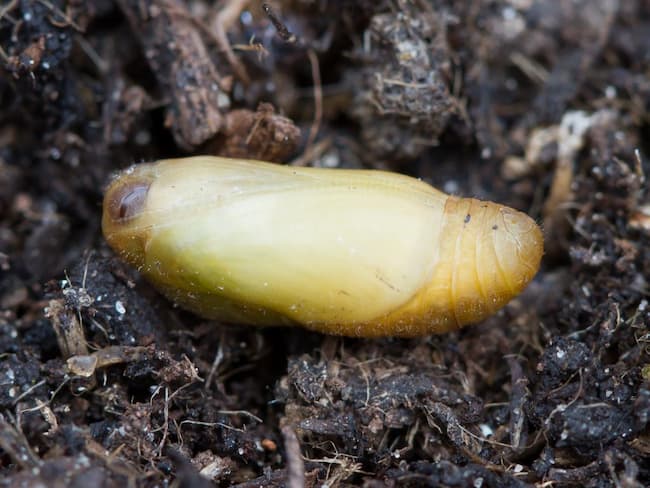
When the caterpillar reaches its full size, it undergoes metamorphosis and forms a chrysalis or pupa. The pupa is usually attached to vegetation or hidden among leaf litter, where it undergoes a remarkable transformation. Inside the protective casing, the caterpillar’s body reorganizes, and the adult butterfly develops.
3.4 Adult Stage
Emerging from the pupa, the adult Chalk Hill Blue butterfly spreads its wings for the first time. The males display their vibrant blue wings as they search for mates, engaging in aerial courtship displays. The females lay their eggs on suitable host plants, continuing the life cycle.
Ecological Significance of the Chalk Hill Blue
The Chalk Hill Blue butterfly plays a crucial role in pollination as it feeds on nectar from various flowers. By visiting different flowers, it inadvertently transfers pollen, aiding in the reproduction of flowering plants and contributing to the overall biodiversity of their habitats. The presence of Chalk Hill Blues also indicates the health and diversity of the chalk grassland ecosystems.
Conservation and Threats
The conservation of the Chalk Hill Blue butterfly is vital to protect its fragile population and preserve its natural habitats. Habitat loss due to agricultural intensification, urbanization, and changes in land management practices pose significant threats to this species. Climate change and the use of pesticides also impact their survival. Conservation efforts should focus on preserving and restoring chalk grasslands, promoting sustainable land management practices, and raising awareness about the importance of butterfly conservation.
Creating a Butterfly-Friendly Garden
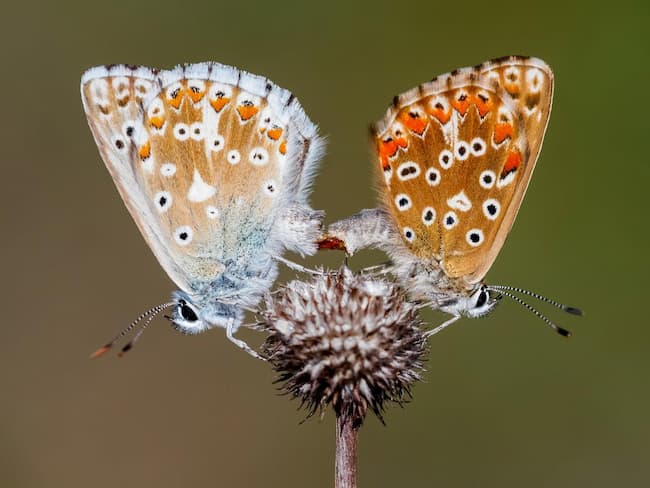
6.1 Planting Nectar-Rich Flowers
To attract and support Chalk Hill Blue butterflies in your garden, consider planting a variety of nectar-rich flowers, such as lavender, marjoram, and knapweed. These flowers provide a valuable food source forthe butterflies and create a vibrant and colorful garden.
6.2 Providing Host Plants
To encourage Chalk Hill Blue butterflies to breed in your garden, incorporate suitable host plants like horseshoe vetch (Hippocrepis comosa) into your landscape. These plants serve as food sources for the caterpillars and create a conducive environment for their development.
6.3 Creating Sheltered Areas
Chalk Hill Blue butterflies prefer open and sunny habitats, but they also require sheltered areas to rest and take refuge from unfavorable weather conditions. Planting dense shrubs or installing windbreaks can provide the necessary shelter and create microclimates that support butterfly activity.
Conclusion
The Chalk Hill Blue (Polyommatus coridon) butterfly is a symbol of beauty and grace in the chalk grasslands and downs of Europe. Understanding its life cycle, appreciating its ecological significance, and taking steps to conserve its habitat are essential for the preservation of this enchanting species. By creating butterfly-friendly gardens, supporting conservation initiatives, and raising awareness, we can contribute to the survival and thriving of the Chalk Hill Blue and other butterfly species.
FAQs
FAQ 1: Are Chalk Hill Blue butterflies rare?
Chalk Hill Blue butterflies are not considered rare but are more localized to specific chalk grassland habitats. Their populations can fluctuate due to changes in land management and environmental factors.
FAQ 2: How can I attract Chalk Hill Blue butterflies to my garden?
To attract Chalk Hill Blue butterflies to your garden, provide suitable host plants like horseshoe vetch and plant nectar-rich flowers such as lavender and knapweed. Creating a sunny and open garden with sheltered areas can also enhance their presence.
FAQ 3: Can I breed Chalk Hill Blue butterflies at home?
Breeding Chalk Hill Blue butterflies at home is challenging and requires specific knowledge and resources. It is best to focus on creating a suitable habitat for them in your garden and supporting their natural life cycle.
FAQ 4: What are the threats to Chalk Hill Blue butterflies?
Habitat loss, changes in land management practices, climate change, and the use of pesticides pose significant threats to Chalk Hill Blue butterflies. Conservation efforts should target these issues to ensure their long-term survival.
FAQ 5: How can I contribute to Chalk Hill Blue butterfly conservation?
You can contribute to Chalk Hill Blue butterfly conservation by supporting local conservation organizations, participating in citizen science projects, and advocating for the protection and restoration of their natural habitats. Additionally, creating butterfly-friendly gardens and spreading awareness about their importance are impactful actions.
